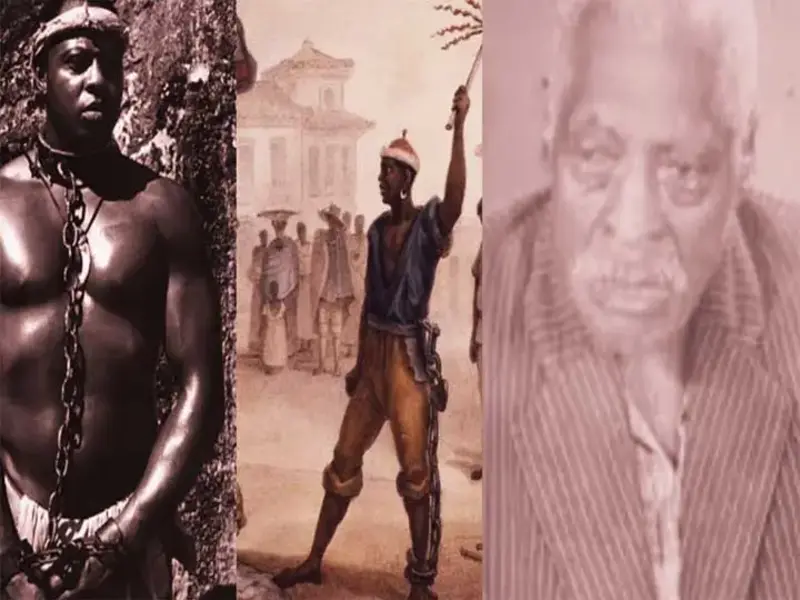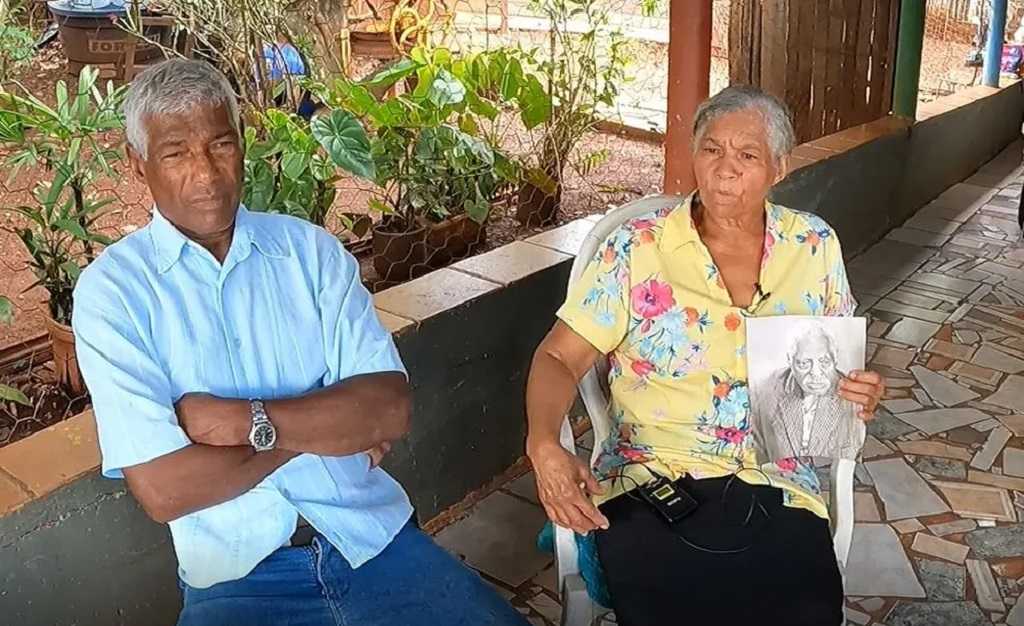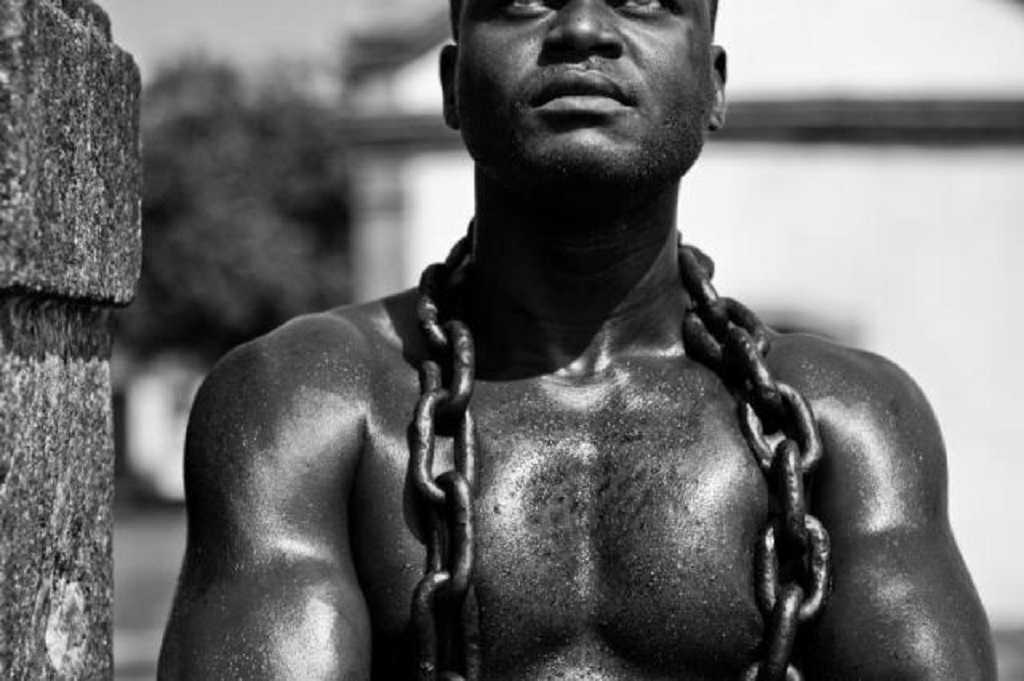Q and A
-
Roque José Florêncio, commonly known as Pata Seca, was an enslaved man who lived in the region of Santa Eudóxia, near São Carlos, in the interior of São Paulo, Brazil, during the 19th and 20th centuries. He was renowned for allegedly fathering approximately 200 children and living up to 130 years.
-
His nickname, which translates to “Dry Paw” in English, originated from a tradition among enslaved individuals on the farm where he lived. Slaves were given animal names, and due to Pata Seca’s tall stature (standing at 2.18 meters), thin legs, and large hands and feet, he was given the name Pata Seca.
-
His physical characteristics, such as his height and slender legs, made him desirable as a “breeding slave.” The owner of the farm, Francisco da Cunha Bueno, chose Roque as a breeding slave responsible for impregnating enslaved women on the farm to produce more enslaved individuals for labor. This practice was based on the superstitious belief that men with thin legs were more likely to father male children.
-
He had approximately 200 children, with nine of them being born to his wife Palmira. The rest of his children were reportedly conceived with enslaved women in the slave quarters. Today, it is estimated that over 30% of the population of Santa Eudóxia are descendants of Roque.
-
Why is preserving Pata Seca’s story important?
The descendants of Roque and their relatives strive to preserve his story to ensure that the memory of their ancestors and other enslaved individuals is not forgotten. They believe that despite the hardships they endured, these individuals were significant figures in history and should be remembered.
Pata Seca Wiki, Age, Biography, Net Worth, Career, Wife, Death, Wikipedia
| Name | Pata Seca |
| Profession | Businessman |
| Date of Birth | 1828 |
| Age | 130-year-old Death |
| Birth Place | Sorocaba, São Paulo, Brazil |
| Material status | Married |
| Wife Name | Palmira |
| Education | Graduated |
| Religion | Christian |
| Father Name | NA |
| Mother Name | Not Known |
| Nationality | Nigerian |
| Height | 7 Feet 0 inches |
| Weight | 150 KG (Approx) |
| Eye Color | Black |
| Hair Color | Black |
Who was Pata Seca?
Pata Seca is one of history’s most unforgettable characters. His struggle and heart condition let us comprehend his tenacity and the challenges of an oppressed person throughout the slavery era. He is thought to have fathered around 200 children. He controls 30% of the population. According to additional tales, all slave women were compelled to have sexual contact with him and bore 200 children as a result.

Pata Seca Early Life, Biography
He was purchased from a fair in Sorocaba by Francisco da Cunha Bueno, a landowner in the region of So Carlos. Florêncio’s physical characteristics, particularly his 2.18-meter height and slender legs, earned him the moniker “Pata Seca” (Dry Leg). As an enslaved man, he was in a unique situation because he did not work in the fields or reside in the slave quarters. He had an excellent rapport with his owner, Francisco da Cunha Bueno, who entrusted him with tasks like carrying mail and caring for the farm’s animals, which required him to ride his horse daily between the remote village and the city of So Carlos.
How many children did Pata Seca have?
Pata Seca has an incredible track record of bearing children. He fathered 249 children with several women, according to family relatives. The majority of them were born to enslaved women assigned to them by their proprietors. Some were born to free women who fell in love with him or paid for his services. Pata Seca loved his children and wanted to keep them from being sold into slavery. He taught them how to read and write, as well as how to fight and survive. He also gave them names that highlighted their African ancestry or personal characteristics. Some of his offspring went on to become leaders of quilombos, or abolitionist groups. Pata Seca’s descendants can be found across Brazil and beyond.
Death Cause
Pata Seca passed away on June 13th, 1958, at the age of 130. In Santa Eudóxia, So Carlos, So Paulo, Brazil, he died quietly in his bed. He was surrounded by family and friends, who paid tribute to him with songs and prayers. Pata Seca witnessed numerous historical events and transformations in Brazil. He lived through the abolition of slavery in 1888, the establishment of the republic in 1889, the rise and fall of multiple presidents and dictators, two world wars, and several social movements. Many people who admired Pata Seca’s grit and resilience lamented his loss. Thousands of people came to pay their respects to him at his funeral. His remains were interred in a cemetery in Santa Eudóxia, where a monument in his honor was erected.
Pata Seca Wife
He eventually married Palmira, a city girl he met while working as a mail carrier. They settled on a property where the owner granted them 20 requirements of the land. They were unable to entirely enclose their property due to financial constraints, resulting in the loss of some land to neighbors.
Facts
- He an enslaved person who lived in Brazil throughout the 19th and 20th centuries, was known as Pata Seca.
- He was born in Sorocaba, a city in the state of So Paulo, and was bought and sold by various slave owners before arriving at the farm of the Viscount of Cunha Bueno, who gave him his name and surname.
- Seca was well-known for his enormous height and power. He stood about 7 feet (2.18 meters) tall and weighed around 330 pounds (150 kilograms).
- He was also dubbed a “breeding slave” since he fathered over 200 children with various enslaved women. His slave owners employed him to enslave more people for their crops.
- According to oral stories from his ancestors and locals of Santa Eudóxia, a district of So Carlos where he spent the majority of his life, he lived for 130 years.
- Seca became a free man after witnessing the abolition of slavery in Brazil in 1888. He worked at the Viscount of Cunha Bueno’s property until he died in 1958.
Social Media Links
Thank you for reading this article on Pata Seca’s Wiki. Please share the post on social media with your friends and family and leave a comment.
Early Life and Enslavement
Roque José Florêncio was born in the first half of the 19th century, although the exact date of his birth is not known. He was bought by Francisco da Cunha Bueno, a landowner in the vicinity of São Carlos, from a fair in Sorocaba. Florêncio’s physical attributes, particularly his height of 2.18 meters and slender legs, led to his nickname “Pata Seca” (Dry Leg). He enjoyed a unique position as an enslaved man, as he did not work in the fields or live in the slave quarters.
He had a good relationship with his owner, Francisco da Cunha Bueno, who entrusted him with responsibilities such as delivering mail and caring for the farm’s animals, which required him to travel daily on horseback between the rural village and the city of São Carlos. Roque José Florêncio’s physical attributes, including his height and slender hands, earned him the nickname “Pata-Seca”
Pata Seca’s Slave Story Explained
The history of slavery in Brazil spans centuries and carries significant weight in shaping the nation’s economy, society, and culture. Roque José Florêncio, commonly known as Pata Seca, is a prime example of 350 years of brutal slavery in Brazil.
Originally purchased in Vila Sorocaba, Pata Seca was subsequently sold to Visconde da Cunha Bueno, the owner of a coffee-focused plantation.
Likewise, Florêncio had been dubbed “Pata Seca,” meaning “Dry Paw” in Portuguese; however, its origin has not been definitively established.
 Pata Seca’s descendents continue to share his story to the world. (Source: G1 – Globo)
Pata Seca’s descendents continue to share his story to the world. (Source: G1 – Globo)
While some opinions say that it may relate to either his external characteristics or perhaps even his position as a laborer under slave ownership.
Described as “strong and tall,” standing at an impressive 2.18 meters, Pata Seca was regarded as a “good and obedient” enslaved man. His story represents just one among countless tales of individuals who endured the atrocities of slavery in Brazil.
Through Pata Secas’ story, we are confronted with Brazil’s unsettling past as a country built on the backs of enslaved people. It sheds light on the inhumane treatment suffered by enslaved people and the profound impact this institution had on the nation.
Moreover, through stories like Pata Seca’s, we gain insight into the struggles, resilience, and ongoing quest for justice and equality for those who were enslaved.
Quick Biography
Pata Seca, also known as Roque José Florêncio, was a renowned figure in São Carlos, Brazil. Born in the first half of the 19th century, Roque’s life was characterized by his extraordinary story as a slave who lived for 130 years and fathered an astonishing 249 children. This article delves into the remarkable life of Pata Seca, highlighting his legacy, struggles, and the importance of preserving his memory.
| Name | Roque José Florêncio (Pata Seca) |
|---|---|
| Date of Birth | 1828 |
| Place of Birth | Sorocaba, São Paulo, Brazil |
| Date of Death | 1958-06-13 |
| Place of Death | Santa Eudóxia, São Carlos, São Paulo, Brazil |
| Nickname | Pata Seca |
| Occupation | Enslaved person, breeding slave |
| Height | 2.18 meters (approximately) |
| Children | 249 (according to family members) |
| Spouse | Palmira |
Личная жизнь
В 2019 году кинозвезда Анна-Мария Секлюцкая начала встречаться с польским театральным актером и режиссером Лукашем Витт-Михаловским, который также является уроженцем Люблина. Они познакомились в краковской академии и с тех пор состоят в гражданском браке. Между ними имеется значительная разница в возрасте — 18 лет. Анна-Мария не только встречается с Лукашем, но и периодически выступает в его постановках. Она отмечает, что вместе с ним чувствует себя маленькой и рада находиться рядом с таким человеком, от которого можно поучиться.
В школьные годы Анна-Мария была общительной. Однако, в старших классах она начала прогуливать уроки и полюбила шумные вечеринки, где всегда была в центре внимания. Со временем, когда она поступила в университет, ее предпочтения изменились. Теперь Анна-Мария предпочитает проводить время дома, в окружении своих друзей и близких. Она счастлива, что теперь ее жизнь идеально соответствует этому образу. Ее мечта — иметь уединенный дом в лесу, где она сможет жить вместе со своим любимым человеком, детьми и немецкой овчаркой.
Попав в шоу-бизнес, Анна-Мария столкнулась с мизогинией и критикой со стороны тех, кто не ценит и не понимает искусство актерства. Чтобы избежать слухов и сплетен в прессе, она редко дает интервью и старается ограничить информацию о своей личной жизни. На своей странице в социальной сети Instagram (которая, к сожалению, запрещена в РФ), Анна-Мария делится в основном информацией о своей работе, а не о личных делах. Она опубликовала только одну фотографию с Лукашем Витт-Михаловским и отметила, что других фотографий с ним больше не будет.
Анна-Мария имеет рост 160 см и весит 51 кг.
Who Was Pata Seca? Wikipedia And Biography
Roque José Florêncio, widely known as Pata Seca, left an indelible mark on So Carlos, Brazil, where he gained popularity for his remarkable stature and captivating story.
Roque, a slave born in the early 1800s in Sorocaba, So Paulo, was bought by a farmer from So Carlos to serve as an “escravo reprodutor,” meaning he was used to breed more slaves in the Santa Eudóxia district.
Further, according to his family and a study conducted on his lineage, Roque is believed to have fathered over 200 children, living a remarkably long life that extended to an alleged 130 years.
 Pata Seca was a slave in Brazil during the late 18th and early 19th centuries. (Source: Diário de Biologia)
Pata Seca was a slave in Brazil during the late 18th and early 19th centuries. (Source: Diário de Biologia)
Seca’s personal relationships remain shrouded in mystery, though it is speculated that he had a wife or could had pursued multiple partners throughout his life.
However, a tragic end awaited Roque as he suffered from heart failure attributed to myocarditis and sclerosis, along with the onset of senility.
Moreover, the remarkable story of Roque José Florêncio, who was also called Pata Seca, still has the power to fascinate people.
Likewise, Pata Seca, who was enslaved, demonstrated amazing strength and depth, leaving a legacy that is forever memorialized in the history of So Carlos.
Who was Pata Seca?
Pata Seca was the nickname of Roque José Florêncio, who was born in 1828 in Sorocaba, São Paulo, Brazil. He was captured and enslaved by a landowner named Joaquim José de Oliveira. He worked as a laborer in the fields and also as a breeding slave, meaning that he was forced to have sexual relations with enslaved women to produce more enslaved children.
Pata Seca was a remarkable man who stood over 7 feet tall (2.18 meters) and had a muscular physique. He was known for his courage, intelligence, and charisma. He also had a strong sense of justice and dignity. He often rebelled against his oppressors and tried to escape several times. He also helped other enslaved people to flee and join quilombos, which were communities of escaped enslaved people.
A family member of Pata Seca
Pata Seca’s nickname means “dry foot” in Portuguese. There are different explanations for the origin of this name. Some say that it was because he had a dry skin condition on his feet. Others say that it was because he walked barefoot on the hot soil without feeling pain. Another version is that it was because he left no traces when he ran away from his captors.
Фильмы
Дебютный проект в фильмографии польской актрисы Анны-Марии Секлюцкой появился в 2019 году. Она исполнила эпизодическую роль в сериале «В добре и в зле». Также она снялась в двух короткометражных фильмах, которые были размещены на YouTube. Благодаря этим работам актрису заметили и пригласили на пробы для фильма «365 дней».
Лента «365 дней» основана на одноименном эротическом романе-бестселлере польской писательницы Бланки Липинской. Анна-Мария прочитала эту книгу годом ранее, и у нее возникли сомнения относительно того, должна ли она играть настолько откровенную героиню. В конце концов она решилась и отправилась на прослушивание, где получила главную женскую роль.
Анне-Марии Секлюцкой досталась роль менеджера по продажам Лауры Бель, которая успешна в своей профессии, но несчастлива в любви. Внезапно девушка знакомится с боссом сицилийской мафии Массимо Торричелли, который ставит перед собой целью покорить эту красавицу.
Фильм был выпущен в начале 2020 года в Польше и летом того же года появился на платформе Netflix. Лента, полная эротических сцен и обнаженных актеров, была названа польской версией «50 оттенков серого», но ее также раскритиковали за романтизацию изнасилований и похищений людей. Фильм был номинирован на «Золотую малину» в семи категориях, включая «Худший ремейк». Несмотря на 95 тысяч подписавших петицию об удалении фильма с Netflix, он оказался одним из самых просматриваемых шоу на этой платформе в течение года.
Успех этого проекта, хоть и спорный, привел к созданию трилогии. Сиквел «365 дней: Этот день», в котором отношения пары омрачает измена Массимо и бегство Лауры с садовником, был выпущен весной 2022 года. Релиз третьей и завершающей части, «Следующие 365 дней», состоялся летом того же года. Как и предыдущие два фильма, лента получила негативные отзывы.
How many children did Pata Seca have?
Pata Seca had an astonishing record of having children. According to his family members, he fathered 249 children with different women. Most of them were born to enslaved women who were assigned to them by their owners. Some of them were born to free women who fell in love with him or who paid him for his services.
Pata Seca’s great-grandson
Pata Seca loved his children and tried to protect them from slavery. He taught them how to read and write, how to fight, and how to survive. He also gave them names that reflected their African heritage or their personal traits. Some of his children followed in his footsteps and became leaders of quilombos or abolitionist movements.
Pata Seca’s descendants are spread all over Brazil and beyond. They are proud of their ancestor and celebrate his memory every year on June 13th, the date of his death.
Also Read: –
Family, Parents & Siblings
Pata Seca was a legendary figure in Brazilian history, who was born as an enslaved person in Sorocaba and sold to the Viscount of Cunha Bueno, who gave him the name Roque José Florêncio. He was a tall and strong man, who measured over 7 feet and weighed over 300 pounds. He was also known as a “breeding slave”, who had more than 200 children with different enslaved women. He lived for 130 years, according to some sources, and died in 1958.
Pata Seca’s parents and siblings are not well known, as he was separated from them when he was young and taken to São Carlos, where he worked on a sugar cane plantation. He never saw them again, and he did not know their names or whereabouts. He only had vague memories of his mother’s face and voice, and his father’s strength and courage. He also did not know how many brothers and sisters he had, or if they were alive or dead.
Pata Seca’s relatives
Pata Seca’s life was full of hardships and suffering, but also of resilience and resistance. He endured the brutality of slavery but also fought for his freedom and dignity. He witnessed the horrors of the slave trade, but also helped many other enslaved people escape and survive. He was exploited by his master but also became a respected leader and a legend in his community. He was a victim of the system, but also a hero of his people.
Some Facts About Pata Seca Wikipedia
- Pata Seca was the nickname of Roque José Florêncio, an enslaved person who lived in Brazil in the 19th and 20th centuries.
- He was born in Sorocaba, a city in São Paulo state, and was bought and sold by different slave owners until he arrived at the farm of the Viscount of Cunha Bueno, who gave him his name and surname.
- Seca was known for his extraordinary height and strength. He was over 7 feet tall (2.18 meters) and weighed about 330 pounds (150 kilograms).
- He was also known as a “breeding slave” because he had more than 200 children with different enslaved women. His slave owners used him to produce more enslaved people for their farms.
- He lived for 130 years, according to oral reports from his descendants and the residents of Santa Eudóxia, a district of São Carlos where he spent most of his life.
- Seca witnessed the abolition of slavery in Brazil in 1888 and became a free man. He continued to work at the farm of the Viscount of Cunha Bueno until his death in 1958.
- He was a religious man who attended the Catholic church and participated in festivals and processions. He also practiced African rituals and beliefs with other enslaved people.
- Seca was respected and admired by his community for his courage, kindness, and wisdom. He helped other enslaved people to escape and to resist oppression.
- Pata was a legend in his own time and after his death. Many stories and myths were told about him, such as his ability to heal diseases, to communicate with animals, and to foresee the future.
- Pata was buried in the cemetery of Santa Eudóxia with a simple wooden cross. His grave became a place of pilgrimage and homage for his descendants and admirers.
- He was honored by several artists and writers who depicted his life and legacy in paintings, sculptures, books, and songs.
- Pata was recognized by the Brazilian government as a historical figure and a symbol of black resistance and culture. His name was given to streets, schools, and monuments.
- Roque was featured in a Google Arts & Culture project called “Enciclopédia Negra” (Black Encyclopedia), which aimed to highlight the contributions of black Brazilians to the history and society of the country.
- Pata was the subject of a documentary film called “Pata Seca: O Escravo Reprodutor” (Pata Seca: The Breeding Slave), which was released in 2020 and won several awards at national and international festivals.
- Roque was the ancestor of many famous and influential people in Brazil, such as politicians, musicians, athletes, and activists. Some of his descendants are still searching for their roots and relatives.
What is the meaning of Pata Seca?
Pata Seca is more than just a name or a nickname. It is a symbol of a man who defied the odds and lived a remarkable life despite being enslaved and oppressed. It is also a symbol of a people who resisted slavery and fought for their freedom and dignity.
Pata Seca’s story has been passed down from generation to generation as an example of strength, courage, and perseverance. His story has inspired many writers, artists, musicians, and activists who have portrayed him in different ways.
Pata Seca’s meaning is also related to his legacy. He left behind hundreds of children who carried on his bloodline and his spirit. He also left behind a message of hope and justice that still resonates today.
Детство и юность
Анна-Мария родилась 31 мая 1992 года в польском городе Люблине. Ее родители были адвокатами и очень заботились о ее образовании. В детстве девочка изучала английский, французский и немецкий языки, ходила на занятия балетом и посещала математический кружок. Кроме того, она обожала петь.
Сначала Анна-Мария планировала идти по стопам своего отца и изучать юриспруденцию. Однако, в последний момент она передумала и решила посвятить себя актерскому искусству. Ее родители поддержали ее решение, хотя немного беспокоились о том, как будет зарабатывать деньги на жизнь.
Анна-Мария всегда мечтала поступить в актерское отделение Лодзинской киношколы. Однако, она не смогла пройти отбор. Но она не сдавалась и с третьей попытки была принята в филиал Краковской академии театрального искусства в городе Вроцлаве. На факультете кукольного искусства Анна-Мария играла в студенческих спектаклях, включая роли Белой и Красной королев в постановке «Алиса в Стране чудес» по сказке Льюиса Кэрролла. Во время учебы она планировала бросить академию и поступить в киношколу, но влюбилась в куклы и решила остаться.
Анна-Мария получила диплом вуза в 2018 году и начала свою карьеру на театральной сцене. Она сыграла главную роль в пьесе «День святого Валентина» в городе Еленя-Гура, а также провела гастроли в Зальцбурге и Мадриде. Позже она сияла на сцене культурного центра в родном Люблине с постановкой о жизни мексиканского режиссера Людвига Маргулеса.
How did Pata Seca die?
Pata Seca died on June 13th, 1958, at the age of 130 years old. He died peacefully in his bed in Santa Eudóxia, São Carlos, São Paulo, Brazil. He was surrounded by his family and friends who honored him with songs and prayers.
Pata Seca lived through many historical events and changes in Brazil. He witnessed the end of slavery in 1888, the proclamation of the republic in 1889, the rise and fall of several presidents and dictators, two world wars, and many social movements.
Pata Seca death certificate
Pata Seca’s death was mourned by many people who admired him for his courage and resilience. His funeral was attended by thousands of people who paid their respects to him. His body was buried in a cemetery in Santa Eudóxia, where a monument was erected in his honor.























